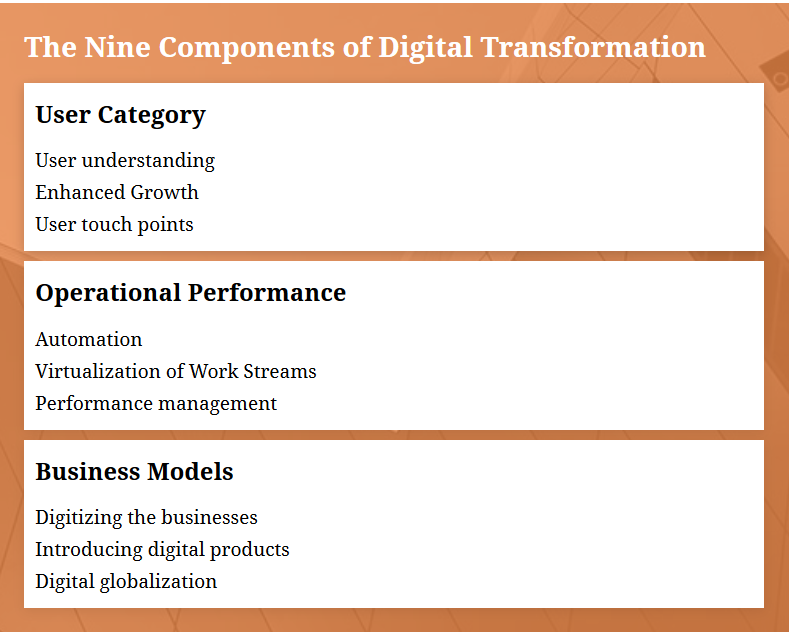 Anthony Cecchini is the President and CTO of Information Technology Partners (ITP), an ERP technology consulting company headquartered now in Virginia, with offices in Vienna and Herndon. ITP offers comprehensive planning, resource allocation, implementation, upgrade, and training assistance to companies. Anthony has over 20 years of experience in SAP business process analysis and SAP systems integration. ITP is an Appian, Pegasystems, and UIPath Low-code and RPA Value Added Service Partner. You can reach him at [email protected].
Anthony Cecchini is the President and CTO of Information Technology Partners (ITP), an ERP technology consulting company headquartered now in Virginia, with offices in Vienna and Herndon. ITP offers comprehensive planning, resource allocation, implementation, upgrade, and training assistance to companies. Anthony has over 20 years of experience in SAP business process analysis and SAP systems integration. ITP is an Appian, Pegasystems, and UIPath Low-code and RPA Value Added Service Partner. You can reach him at [email protected].
Although the idea of a digital business transformation is a hot topic for companies and governments across the globe. Executives in all industries are using digital advances such as analytics, mobility, social media and smart embedded devices as well as improving their use of traditional technologies such as ERP to change customer relationships, internal processes and value propositions. There is no doubt that more and more businesses than ever are seeking to achieve a state of full operational efficiency and effectiveness via digital transformation.
But what is Digital Transformation or DX? Well Wikipedia use the following very simple definition
A digital business transformation initiative touches many, if not all, aspects of your business. From common business processes to the way the organization develops models for its corporate ecosystem, as well as customers, automation, digital content generation, and more.
Well it is at the intersection of business process, automation, and managing constant change that a BPM platform like the ones from PegaSystems or Appian can accelerate the DX journey. Let’s explore this a bit more..
In “The Nine Elements of Digital Transformation,” from CIO Magazine describe a coherent and logical approach to digital transformation, placing its key attributes (items) in three broad categories. Customer /User, Operations, and Business Models. I will be changing the customer category to be the User category and replacing “Sales Pitches” with Growth, as I am writing this mostly for Governments and not commercial entities. The list is outlined below…

It is in the second category, Operational Performance, that is largely responsible for the moving pieces to make any DX initiative work. It is also this central category that consolidates all the elements of the digital business transformation process, providing the ground for new and necessary business models come to life, and enabling them to be agile, efficient, and intelligent. It is inside this category a BPM System could help an agency or company Automate thru the use of RPA (Robotic process Automation), Virtualize work via unattended RPA in conjunction with intelligent workflows, increase performance with a beautiful and intuitive UX, build low-code solutions that are high-performing, reliable and scalable.
New business and IT developments are constantly arising, adding an additional levels of complexity and forcing companies to frequently assess their DX plans. Therefore, it is In the context of a digital transformation initiative, that the adoption of a BPM system can help. Companies and governments can leverage BPM’s potential to use process management and automation practices and deliver specific benefits such as efficiency, effectiveness, and agility (i.e., the ability to quickly adapt to new business requirements).
BPM can and should be used to directly support and influence user experience efforts by streamlining the process, automating low-value, high-volume, rule-based tasks, and, most importantly, reducing the time users need for process execution and operation.
This way, BPM Platform Solutions solutions can help put the customer/user at the center of the equation, making a clear impact on:
- Optimizing the costs of operation;
- Improving delivery timelines, accuracy, and compliance
The following considerations for digital process agility can help companies and governments implement an effective business process and automation solution to work with a digital transformation initiative.
Think Long term
BPM solutions should be part of a continuous digital business transformation journey and should be permanent tool for achieving progressive business and customer success, rather than a short-term project.
Select The Right BPM Solution
There are many solutions to choose from, but consider the software functions you need to achieve core digital transformation goals. Setting clear functional priorities that support your current and future digital transformation strategy needs is essential.
BPM solutions need to be flexible and mobile
Connected and disconnected access is critical, from any device, such as a PC, tablet, or smartphone, as well as from any place and at any time. Cloud options can facilitate the adoption of BPM software offerings, especially those that with FEDRamp Certifications. Take advantage of subscription-based BPM models or BPM on-demand services to reduce their initial IT investment.
DevSecOps – Secure Continuous Innovation
BPM and automation initiatives need to ensure secure continuous improvement and innovation.
Flexible and Simple
An agile approach to design, development,testing, and delivery is essential to successful deployment and user acceptance.
Establish a BPM Center of Excellence (CoE)
A CoE is at heart a group of people – experts in business process management, customer relationship management, and business domain, equipped with an arsenal of best practices and tools. A mature COE is a self-directing entity responsible for supporting business users and shepherding complex projects to successful completion.
The purpose of a BPM COE is to empower enterprises to get the most out of BPM and DX technology, not only within key teams but across the entire organization. A COE links your big-picture strategy with your day-to-day operations, documents lessons learned and best practices, and makes it easier for different groups to reuse and adapt proven solutions. Because it brings together smart people and cutting-edge technology from all parts of the enterprise, a CoE is essential in your digital transformation journey.
Experiment with AI
AI + intelligent automation = Actionable insight. By itself, AI doesn’t always impact outcomes. But when you can combine AI into your existing business processes, great things can happen.
Summary
The companies and governments are moving forward with digital transformation at varying paces and experiencing varying levels of success. Some are transforming many parts of their business while others are still doing only the basics. Others are encountering organizational issues or other challenges that prevent them from transforming successfully.
But one thing is clear. The best companies — those succeeding — combine digital activity with strong leadership to turn technology into transformation. This is what Gartner calls Digital Maturity. Companies vary in their digital maturity, and those that are more mature outperform those that are not.
Look, leading digital change is hard and requires leaders to have a vision of how to transform their companies/government agnecies for a digital world. So, where can you look? What digital activities represent good opportunities for your business?





